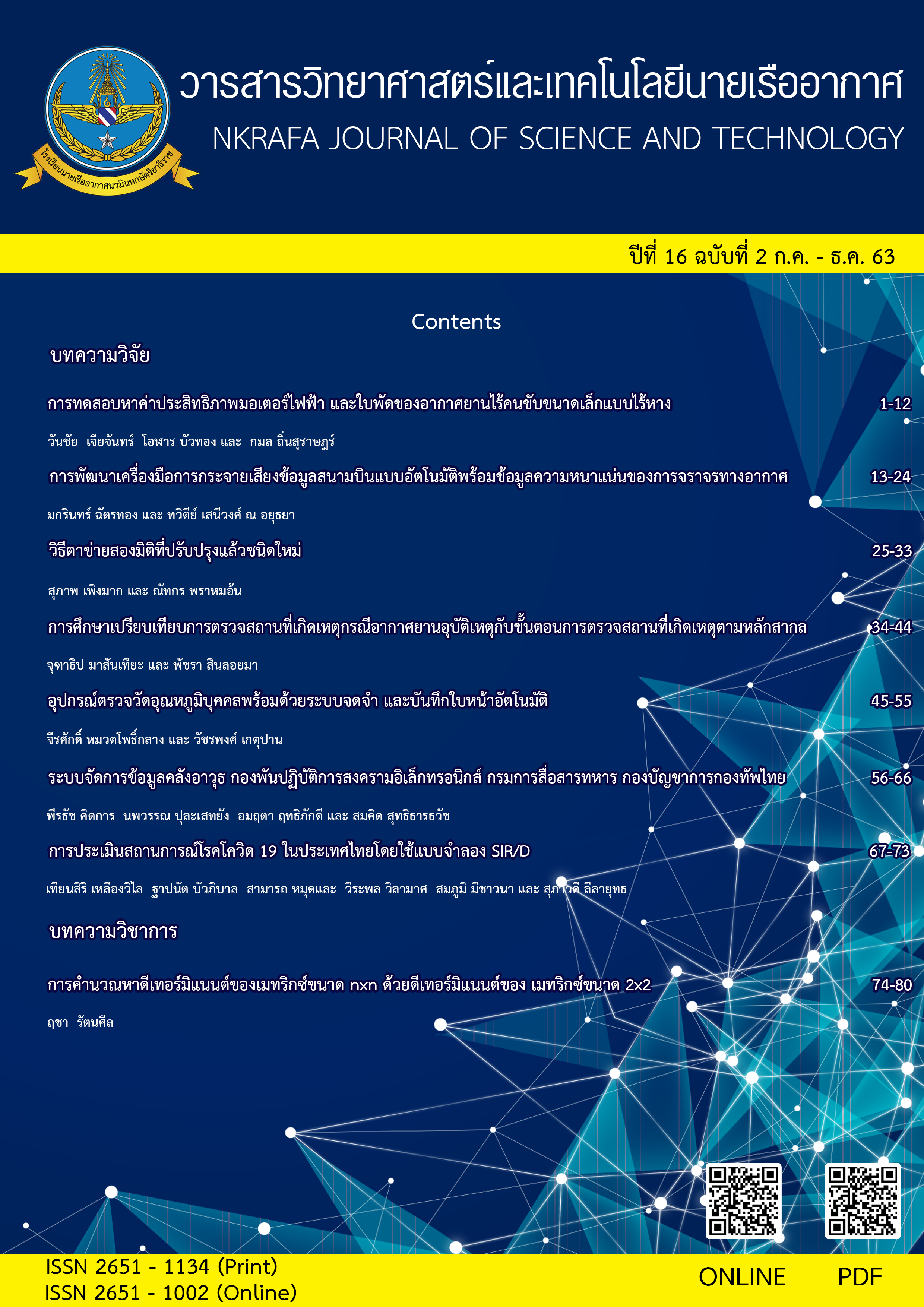Voice-Automatic Terminal Information Service (ATIS) with Traffic Congestion Information
Main Article Content
Abstract
This research presents a model for Voice-Automatic Terminal Information Service which can provide air traffic congestion information to pilots. By counting syllables in the conversations between air traffic controllers and pilots using the Praat Script program, the air traffic density can be analyzed. T-test statistics is used to compare the difference in the number of syllables obtained from the Praat Script program and from human, whereas Pearson correlation is used to test the linear association between the number of aircraft and the number of syllables counted. The results showed that there were no statistically significant differences in the number of syllables from Praat Script and form human count (P = 0.27). In addition, there was a strong positive correlation between the number of aircraft and the number of syllables in the conversation. Finally, this air traffic density information would be combined with meteorological aerodrome reports and converted into voice messages by Google Text-to-Speech. The voice messages were evaluated by users with comprehensibility level of 5.4 (out of 6) and intelligibility of 92.45%.
Article Details

This work is licensed under a Creative Commons Attribution-NonCommercial-NoDerivatives 4.0 International License.
- Content and information in articles published in NKRAFA Journal of Science and Technology are comment and responsibility of authors of articles directly. Journal editorial do no need to agree or share any responsibility.
- NKRAFA Journal of Science and Technology Articles holds the copyright of the content, pictures, images etc. which published in it. If any person or agency require to reuse all or some part of articles, the permission must be obtained from the NKRAFA Journal of Science and Technology.
References
[2] N. I. Vargas-Cuentas & A. Román-González. (2015). Automatic terminal information system for El Alto airport. 2015 International Conference on Technology, Informatics, Management, Engineering & Environment (TIME-E), Samosir, 137-142.
[3] Rehmann, Albert, and Margaaret Schaffer. (1995). Evaluation of Synthetic Automatic Terminal Information Service (ATIS) Messages. ARINC Research Corp Annapolis MD.
[4] International Virtual Aviation Organization. (2019). Perform an Aerodrome Circuit. Retrieved 27th September 2020 from https://Mediawiki.ivao.aero/index.php?title=Perform_an_aerodrome_circuit
[5] International Virtual Aviation Organization (2020). Radio Telephony Basics. Retrieved 9th October 2020 https://mediawiki.ivao.aero/index.php?title=Radio_tel ephony_basics
[6] U.S. Department of Transportation, Federal Aviation Administration. “Aeronautical Information Manual”, Federal Aviation Administration, Chapter 7, Section 1 Meteorology. Jan 2020.
[7] De Jong, N.H., Wempe, T. (2009). Praat script to detect syllable nuclei and measure speech rate automatically. Behavior Research Methods 41. 385– 390.
[8] Paul Boersma and David Weenink. (2018): Praat: doing phonetics by computer [Computer program]. Version 6.0.37, retrieved 14 March 2018 from http://www.praat.org/
[9] Grimshaw, J., Bione, T., & Cardoso, W. (2018). Who’s got talent? Comparing TTS systems for comprehensibility, naturalness, and intelligibility. In P. Taalas, J. Jalkanen, L. Bradley & S. Thouësny (Eds), Future-proof CALL: language learning as exploration and encounters – short papers from EUROCALL 2018 (pp. 83-88). Research-publishing.net.
[10] International Civil Aviation Organization. (2020). Annex 11 to the Convention on International Civil Aviation - Air Traffic Service Fifteenth Edition, Chapter 4, Section 3 Operational flight information service broadcasts.


